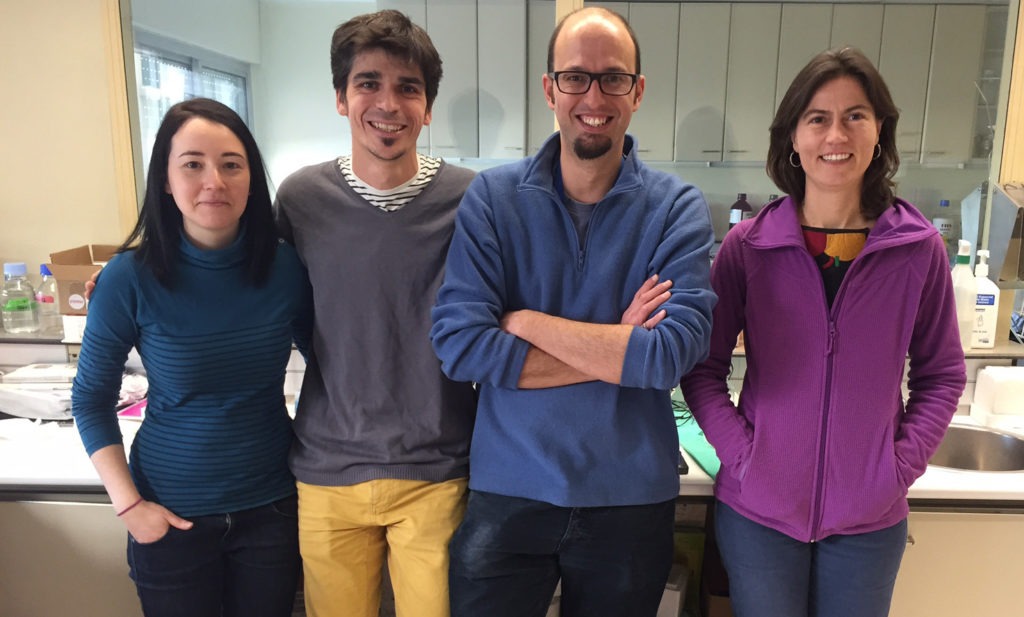The ionotropic glutamate receptors play many roles in the physiological functioning of synapses, and their deregulation is associated with multiple neuropathological conditions. More and more there are evidences that the subclasses of these receptors (NMDA, AMPA or Kainat) are dynamic structures that move between the cytosol and the neuronal membrane, where they act as calcium channels. This has opened new avenues of research that aim to explain how and why these receptors reach the synaptic membrane or drop out.
The researcher David Soto, at the Cellular and Molecular Neurobiology research group, and the head of the subgroup of Neurobiology of ionotropic glutamate receptors, Xavier Altafaj have recently published two independent studies in the journal Frontiers of Neuroscience. In their studies, have identified new molecular regulators of glutamatergic neurotransmission that may contribute to important paradigm shifts in the field and, above all, help to understand the disturbances in traffic of glutamate receptors involved in the pathogenesis of neurological diseases.
The study of Soto (Gratacós-Batlle et al., 2015) describes carnitine palmitoyltransferase 1C (CPT1c) as a new regulator of surface expression of AMPA receptors (AMPARs) in neurons. Traffic fine modulation of the membrane is essential for AMPARs normal synaptic activity and synaptic plasticity processes. The authors present CPT1c as a candidate to regulate AMPARs neuronal physiology.
Moreover, the study published by the group of Xavier Altafaj (Grau et al., 2014) describes the protein kinase DYRK1A as a direct regulator of NMDA receptors, and proposes a new mechanism for the control of glutamatergic neurotransmission in neurons. In the context of Down syndrome (DS), condition in which Altafaj group has previously shown the key role of DYRK1A and deregulation of the NMDAR receptors (NMDARs), this study provides molecular, cellular and functional evidences that DYRK1A directly affects NMDAR, opening new avenues for understanding and designing therapeutic strategies.
Articles reference
Grau C, Arató K, Fernández-Fernández JM, Valderrama A,
Sindreu
C, Fillat C, Ferrer I, de la Luna S, Altafaj X. DYRK1A-mediated phosphorylation of GluN2A at Ser(1048) regulates the surface expression and channel activity of GluN1/GluN2A receptors.Front Cell Neurosci. 2014 Oct 17;8:331. doi: 10.3389/fncel.2014.00331.
Gratacòs-Batlle E,
Yefimenko N,
Cascos-García
H, Soto D.AMPAR interacting protein CPT1C enhances surface expression of GluA1-containing receptors. Front Cell Neurosci. 2015 Feb 2. doi: 10.3389/fncel.2014.00469.

